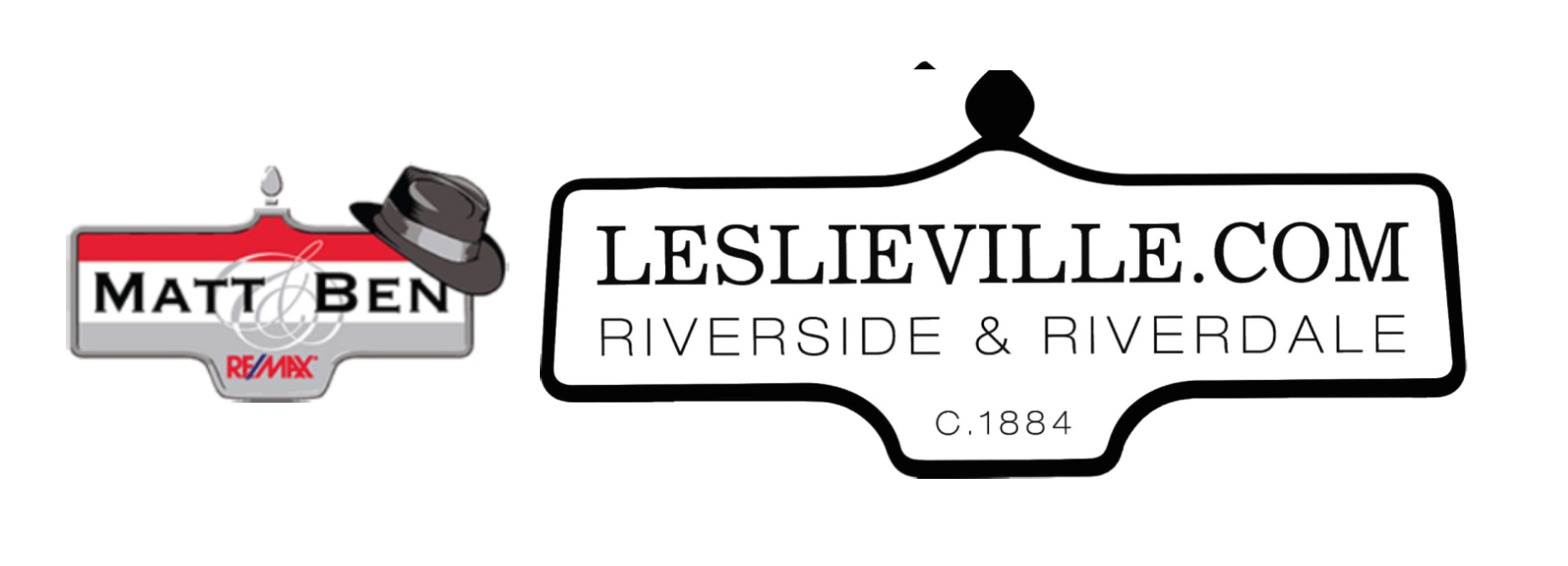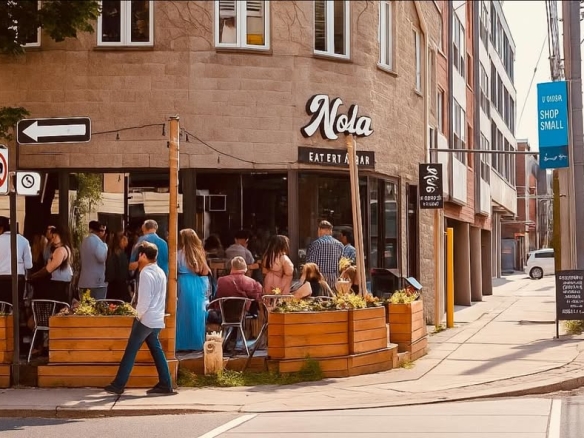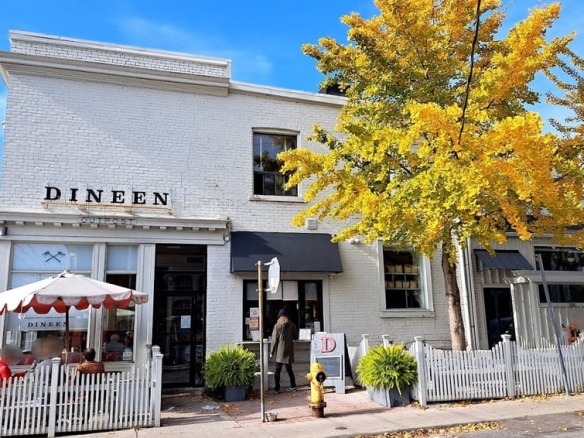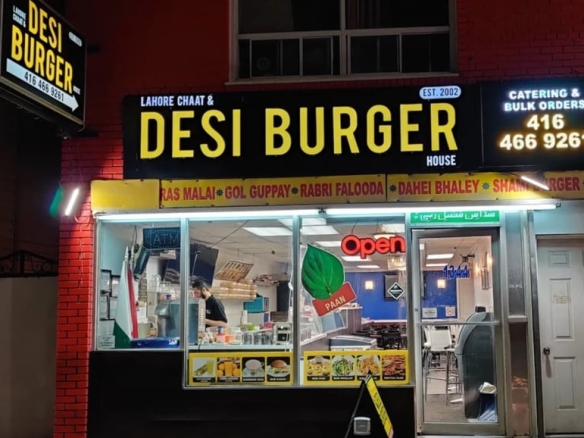This is an excerpt from Elizabeth Muirs fantastic recently published book: Riverdale : East Of The Don
It is used with the authors permission. Please buy a copy to find out the history of your street (and neighbourhood) and at the same time support a great local author!
Dagmar Avenue— Named for Princess Dagmar of Russia, sister of Queen Alexandra
who married King Edward VII.293
Danforth Avenue — A ninety-one-block-long road, named after Asa Danforth who had
nothing to do with the Danforth, but built part of Kingston Road. Described in the nineteenth
century as a “dusty country road through market gardens and brickworks,” or “a muddy road,”
depending on the weather, the Danforth was built by the Don and Danforth Plank Road Co. in
1851. In 1907, the City Directory listed only twenty house numbers between Broadview and
Greenwood on the Danforth; four of those were market gardens. It was not until 1912 that the
street was paved to Greenwood Avenue. In 1921, the Danforth was described as “one of the best
shopping districts in the city.” One real estate agency sold $40,000 in home sites that year. In
1927, one of the first of six Toronto liquor stores was at 170 Danforth.294 [IMAGES 9-12, 9-13]
Dartford Road — Possibly named after English immigrants from that area in England.
Davies Avenue — Named for Thomas Davies, brewer on River Street near the Don.
Thomas Davies Sr. purchased his company in 1834 and was later joined by Alderman Davies Jr.;
alderman 1873–74, 1881–84, 1889, 1893, 1895–96, and 1898–99. Davies married Fidelia Jones
and they had seven children.295 Or for William Davies, called “Piggy” Davies because he
slaughtered and processed more hogs in Toronto than any other place on the continent — except
Chicago. He began the world’s craving for “Canadian bacon” when he started selling salt-cured
pork loin peameal at a stall in the St. Lawrence market. He shipped millions of pounds of pork
products packed in brine because of the lack of refrigeration, although he was the first in Canada
to install an artificial refrigeration unit in 1891. His buildings covered two acres of ground and
he had three ice houses packed with ice cut from the Don River. His singeing machines removed
bristles at the rate of 175 an hour, and he slaughtered 75,000 hogs a year. In 1927, the William
Davies Company became part of Canada Packers. [IMAGE 9-15]
Mike Filey suggests that Davies could be the origin of Toronto’s appellation of
“Hogtown,” and that the etymology of “meat packers” can be traced back to Davies’ packing
pork products in brine. It has also been suggested that Toronto “proudly” embraced the name of
Hogtown when Davies became the largest pork processor in the British Empire. However, an
article in the Globe in 1898 suggests that the term hogtown conveys something quite different:
“The remark originally had no relation at all to our friend the hog, but was merely intended to
convey an impression that the citizens of Toronto were porcine in their tendencies and had their
fore feet in anything that was worth having.… This is Hogtown and growing more hoggy all the
time.”296
Several of Davies’ sons died from tuberculosis, so he gave away most of his huge fortune
to charities, especially to those who were trying to find a cure for that dread disease. The street
was formerly called Mill Street. 297
Dawson Avenue — Possibly for Irish immigrants of that name who settled in the area.
Dearbourne Avenue — Perhaps for the American general in the war of 1812–14, Henry
Dearborne, or for a local property owner.298 The street was formerly called Battye Avenue.299
De Grassi Street — Named for Alfio De Grassi,
an engineer in the Toronto Fire Department and a deputy grand master of the Masonic
Order, Toronto District. While he never lived on De Grassi Street, Alfio hunted and fished there.
De Grassi Street has been featured in shows such as “The Kids of Degrassi Street,”“Degrassi
Junior High,” “Degrassi High,” and most recently, “Degrassi: The Next Generation.” Many of
the scenes were shot locally.300
[ENDNOTEs RENUMBERED FROM HEREON OUT, NOTE 301
REMOVED.]Dewhurst Boulevard — Possibly for a Dewhurst family who immigrated to
Toronto from England.
Dibble Street — For the Dibble brothers, Harry and Robert George, both athletes and
excellent oarsman. Harry, killed in battle in World War I, was also a champion wrestler. Robert,
a Canadian sculling champion, was badly wounded in the war, suffering a severe head injury.
Their battalion, the 180th, was composed entirely of members of sporting clubs in Toronto.302
The street was formerly known as Strange Street.303
Dickens Street — For Charles Dickens who visited Toronto in 1842. “Toronto is full of
life and motion, bustle, business and improvement. The streets are well paved and lighted with
gas; the houses are large and good; the shops excellent … full of hope and promise.” So wrote
Dickens on a triumphal tour of United States and Canada with his wife Kate (Catharine).
Described as small and slender, Dickens spent May 4–6 in Toronto, dining with the chief justice,
John Beverley Robinson. Robinson owned property in Riverdale, but it is unlikely that they had
dinner there. Dickens found Niagara Falls particularly impressive, especially from the “English”
[Canadian] side. He described Canadians as less prying and pushy than Americans, for which he
was grateful. Although he had previously thought of this country as “something left behind in the
strides of advancing society,” he wrote that “Canada has held and always will retain a foremost
place in my remembrance.” The only problem in Canada was the accommodation: “the inns are
usually bad,” he told a reporter.304
Dilworth Crescent — Possibly for the English Dilworth family who settled in Toronto.
Joseph Dilworth was a druggist; James Dilworth was a coal merchant.
Dingwall Avenue — For Neil Kennedy Bain who came from Dingwall, Scotland, listed
in censuses as a flour and feed merchant and later a commercial traveler. The Georgian thirteen-
room “Sargant House” at 14 Dingwall Avenue where Bain lived, with its slender windows, four
fireplace chimneys, and a raised basement kitchen, became known as the “Bain House” since the
Bain family owned it from 1869–1966, buying it from the Sargant family for $4,200. Robert
Sargant, a Scottish immigrant farmer and prosperous merchant selling clothing and dry goods,
built the house in 1860 and worked the fields and orchards of the 200-acre lot. It may have been
their summer home. James Bain, one of at least eight children of Neil Kennedy Bain and Abigail
McDaniel, lived there after his parents. He was employed by the John Taylor Company in
Toronto, which made safes.
Donmount Court, Doncrest Road, and Donlands Avenue — Are named because of
their proximity to the Don Valley. Donlands Avenue was originally called Leslie Street.305
Doris Anderson Court — Named for Doris Anderson, former editor of Chatelaine. See
“Women in Riverdale.”
Dorothy Street — Possibly for Dorothy Kerr who married into the Price family, or
Dorothy Mander whose mother was Stella Katherine Price. Alternately, the street may have been
named for a daughter of John Knox Leslie or for Dorothy Ashbridge.306
Dundas Street East — Named for Sir Henry Dundas, first Viscount Melville, First
Secretary of State for War, 1791–94. The eastern part of the street was formerly called Elliot
Street, but parts of it were known as Dagmar Avenue, Wilton Avenue, and Applegrove
Avenue.307
Earl Grey Boulevard — Named for Albert Henry George Grey, who was governor
general of Canada from 1904–11. Grey made a horseback trip in 1907 over what is now the Earl
Grey pass in British Columbia.308
East Don Roadway — Formerly known as the Don Improvement Roadway and Don
Esplanade.309
East York Avenue — For its geographical location, east of York.
Eastern Avenue — Named in 1876 as a descriptive name, formerly called South Park
east of Leslie Street. At one time, one could cross the Don River at an Eastern Avenue Bridge,
but that was disconnected in 1964. In 2007, a fortified Hells Angels den along Eastern Avenue
was raided and the gang forced out.310
Eastmount Avenue — For its geographical location.
Eaton Avenue — For Timothy Eaton from Ireland who founded the merchandising
empire.
Egan Avenue — Formerly known as Belford Street.311
Ellerbeck Street — For Sarah Ellerbeck who married Captain John Playter, one of
George Henry’s sons. The Ellerbecks were United Empire Loyalists who emigrated from
England in 1774 to “Pikeepsee,” New York State. Lieut. Emmanuel Ellerbeck, a cavalryman and
a mariner, fought in the American Revolution for the British, was jailed by the Americans but
was released when he joined the American rebels; he deserted to the British in 1777. Serving in
the secret service behind enemy lines, he didreconnaissance similar to that done by George
Henry Playter. After the war, he settled in Kingston and claimed the loss of a chest of tools at
sixteen guineas, a house in New York, and a ship “in the King’s service” for a total loss of £281.
He was reimbursed only £70. He may have been a carpenter for in 1795, as he was hired by the
First St. George’s (Anglican) Church in Kingston, which he supported, to build and finish a
gallery in the church. The Ellerbeck daughters and George Henry Playter’s family visited back
and forth between Kingston and York by steamship.312
Empire Avenue — Named for the British Empire, important in the lives of all the British
immigrants:
[BLOCKSTART]
Let each uphold the Empire’s good
In freedom that unites
Make illustrious and good
The scepter of our race.313
[ENDBLOCK]
Endean Avenue — Named for the local Endean family, brickmakers.314
Erindale Avenue — Named after the Irish who lived in the area, formerly known as
Cherry Street.315
Fairview Boulevard — A descriptive term.
Fenwick Avenue — Named for William H. Fenwick who came to Toronto in 1888 and
lived on Logan Avenue. An Orangeman, he was elected alderman in Ward 1 in 1917–18. He was
married to Margaret Thorburn.
Ferrier Avenue — Named for a market gardener of that name. The Ferrier family had a
hardware store at Danforth and Ferrier.316
Fielding Avenue — Named for William Stevens Fielding, federal minster of railways
and canals, and finance.
Filmic Lane — For the movie studios in the area.
First Avenue — Possibly because it was the first street south of Gerrard. The street was
formerly known as Lefroy Avenue.317 [IMAGE 9–16]
Florence Wyle Lane — For the sculptor Florence Wyle. See “Women in Riverdale.”
Frances Loring Lane — For the sculptor Frances Loring. See “Women in Riverdale.”
Frizzell Avenue — For Rev. Wm. Frizzell, minister of Queen Street East (Leslieville)
Presbyterian Church at Kingston Road and Carlaw. He graduated in 1875 from Union Seminary,
New York.318
Fulton Avenue — Is possibly named for a poet. Ely Playter had an acquaintance with
that surname in 1820. Thomas Helliwell, the early settler and brewer, built a home on that
street.319



